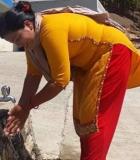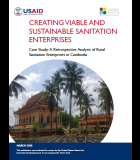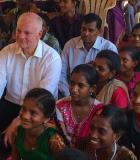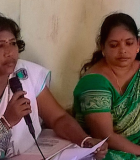WaterLinks
In Asia and the Pacific, widespread migration to urban centers is placing tremendous stress on urban water and sanitation services. Across Asian cities, 340 million people lack access to safe water supply and more than 680 million do not have sustainable sanitation services, leading to increased risks of waterborne illnesses and lost economic productivity. While decision-makers in the Asia-Pacific region achieved and are continuing to improve upon the U.N. Millennium Development Goals (MDG) to halve the proportion of people without sustainable access to safe drinking water and basic sanitation by 2015, many water services providers in the region continue to face challenges related to outdated infrastructure, inadequate skills development and limited investment.
Intensifying extreme weather events linked to climate change, such as the 2010 drought in Vietnam, the 2011 floods in Cambodia, and the 2013-14 typhoons in the Philippines, are further disrupting the adequate provision of urban water services, impacting lives and livelihoods as well as water resources. Water services providers, therefore, are rethinking their own planning processes and current operations to reduce their vulnerabilities and risks by considering climate change related factors like water scarcity, degraded raw water quality, heavy flooding and sea water intrusion. In its 2013-2018 Global Water and Development Strategy, USAID outlines approaches for addressing global challenges in water services and climate resilience by emphasizing innovative applications that combine science and technology, private sector participation, partnerships and greater involvement of local organizations.
The WaterLinks Alliance, a USAID Global Development Alliance (GDA) between AECOM and WaterLinks, improved the lives of hundreds of thousands of individuals in Indonesia, the Philippines, Thailand and Vietnam. Building on an innovative twinning partnership model developed by AECOM, the WaterLinks Alliance facilitated five Water Operator Partnerships, or WOPs, between water operators in these four countries and counterparts in Malaysia, Australia, and South Korea to improve access to safe water and replicate best practices through regional and bilateral activities.
Activity Description
The two-year GDA focused primarily on WOPs which entailed partnership development, implementation, and replication. In Year 1, the Alliance focused on steps 1-3, enabling WaterLinks to connect with new partners, deepen facilitation capabilities and establish the WOPs. AECOM led initial efforts with WaterLinks support in Indonesia, Thailand and Vietnam to familiarize new WaterLinks staff with the facilitation process and WOP partners. WaterLinks then led implementation of steps 1-3 for the remaining WOPs in Indonesia and Philippines with AECOM support.
In Year 2, the Alliance efforts targeted implementation and replication of good practices and essential management and coordination of WOPs. AECOM continued to transfer core facilitation capabilities to WaterLinks through joint implementation of the five WOPs. WaterLinks took greater responsibility to manage and work with the WOP partners to carry out WOP activities while AECOM helped coordinate. AECOM and WaterLinks worked together to ensure each WOP met its objectives to improve access to water services and build resilience against climate change impacts.
Expected Outcomes
- Improve access to urban water supply and sanitation services of at least 220,000 people as a result of enhanced operational efficiencies of water services providers in support of the Paul Simon Water for the Poor Act;
- Increase the adaptive capacity and resilience of water services providers to address potential climate change impacts in support of the USAID Global Climate Change Strategy.
Actual Outcomes
- Aided 482,572 people through improved access to drinking water supply across target areas in Thailand (338,776), Indonesia (15,796), and the Philippines (128,000).
- Improved access to sanitation facilities for 27,700 people in targeted areas.
- Decreased water losses by up to 30% in Indonesia saving over 40,000 cubic meters of water.
- Increased ammonia removal efficiency by 20% to improve wastewater treatment for 6,700 customers in Vietnam.
- LAWACO more frequently removes sludge at a rate of 250m3/h for recirculation volume, every 15 minutes for 30 seconds.
- Decreased the risk of waterborne diseases for over 60,000 people in PPCWD by lowering the turbidity rate of the Campo Uno WTP.
- Decreased manganese levels by 80% in Udon Thani for safer drinking water.





